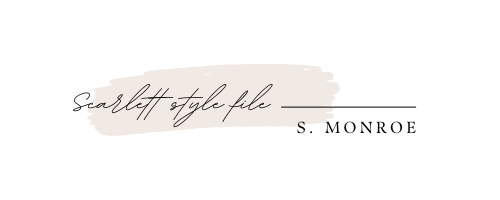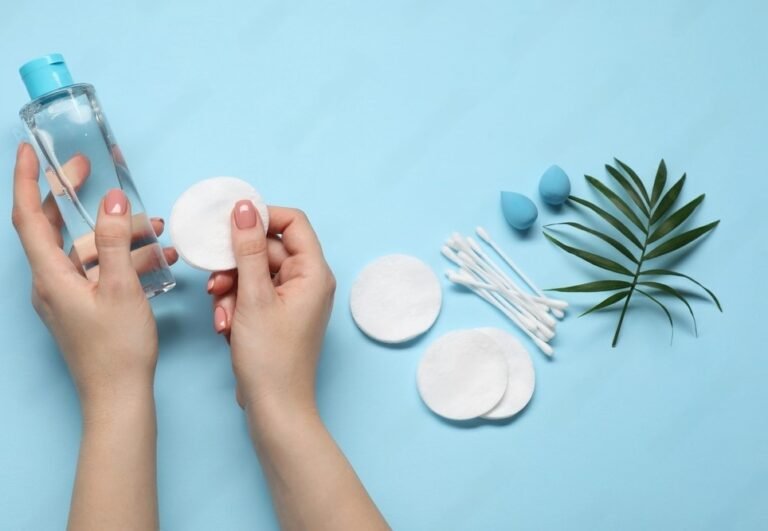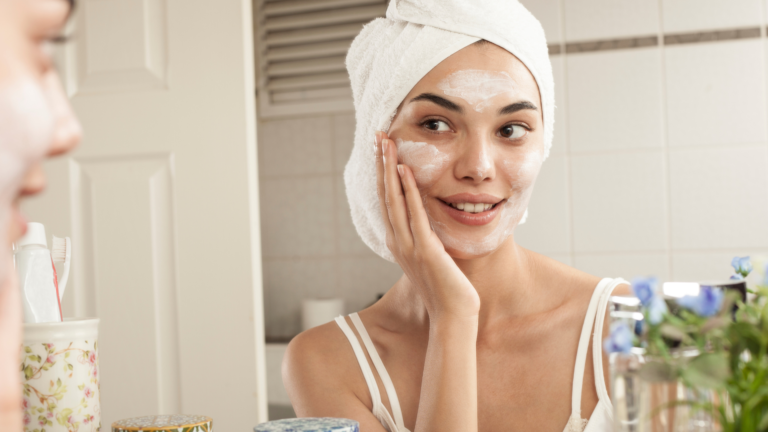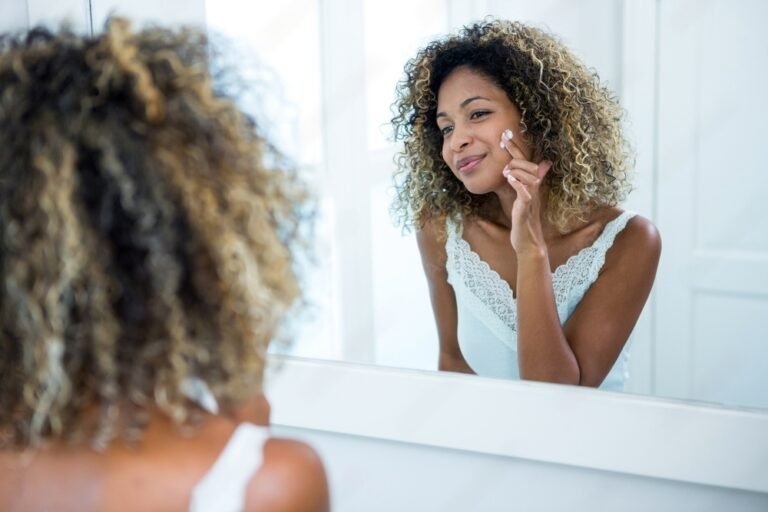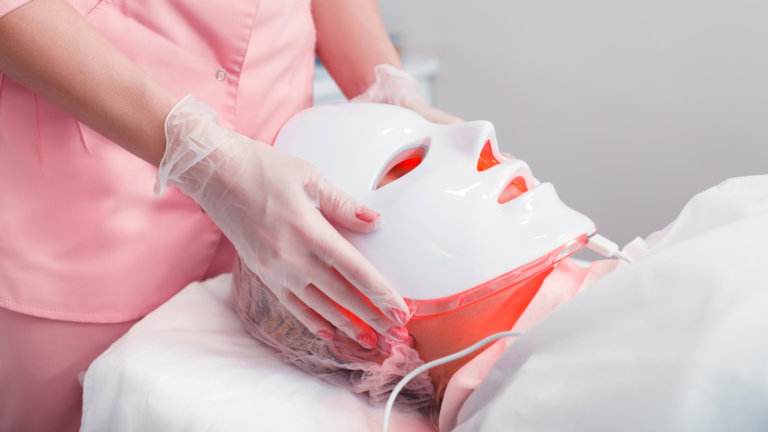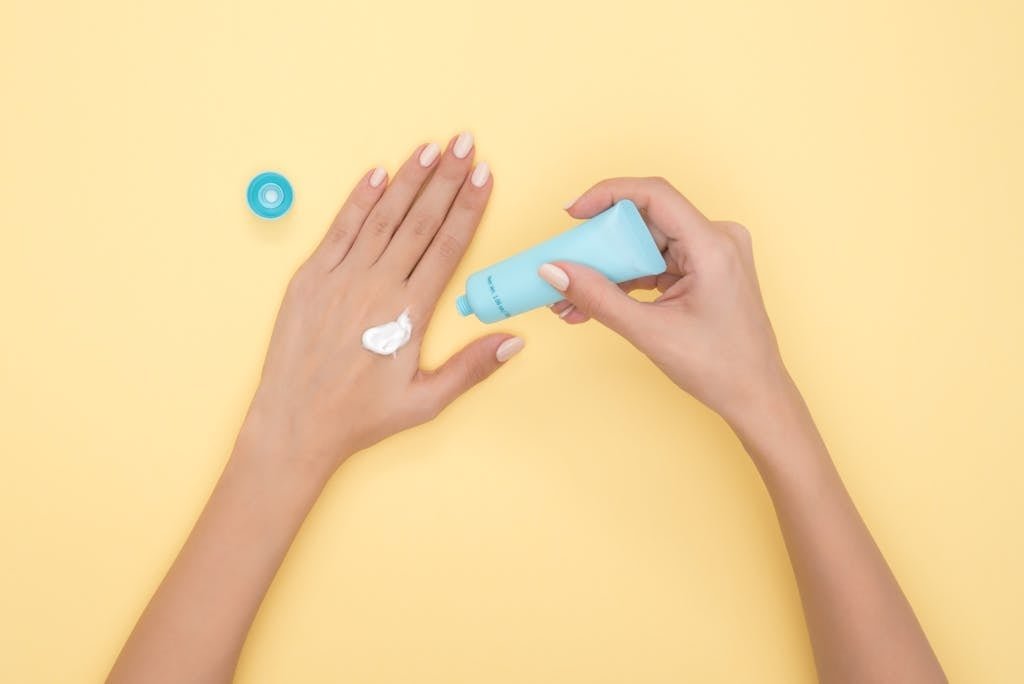Best Acne-Prone Skin Care Tips & Must Have Products
This post may contain affiliate links. That means that if you click on a link and purchase something I recommend, I will receive a small commission at no extra cost to you. As an Amazon Associate, I earn from qualifying purchases. This helps keep my website up and running and is very appreciated. Thank you for your support! Disclaimer
In this article, we’re diving into acne tips and tricks because I’ve noticed there’s a bunch of questions and confusion about it. So, let’s jump right in and I’ll share with you the best skincare tips and products for acne-prone skin.
If you don’t have time to read this post right now, why not save it for later?

Best Acne-Prone Skin Care Tips & Must Have Products
what are the acne types

Honestly, acne can be a bit confusing because there are different types. First, there’s non-inflammatory acne, like blackheads and whiteheads. Whiteheads are closed off and stay white because they’ve never been exposed to oxygen. Blackheads have a hole and turn black because they get oxidized. These types of acne don’t cause redness, pain, or pus, but they can be really annoying because they’re always there.
Then we have inflammatory acne. It’s when you start feeling those annoying little pimples before they fully show up, and they can be pretty painful. When it gets really bad and leaves scars, we call it cystic acne. It can cause bigger issues and leave lasting marks. So, that’s basically what acne is all about.
There’s this thing called hormonal acne, which hits women in their late 20s like a surprise visit from your teenage years. It mainly shows up around the jawline and comes and goes with your period.
Then there’s rosacea, a type of adult acne with different forms. It’s too much to cover now, but we could talk about treating it similarly.
Best skin products for Acne-Prone Skin
Let’s jump in quickly to some of my favorite roundups of products.
Cleansers for Acne-Prone Skin:

First things first, don’t skip washing your face. Having acne doesn’t mean you’re dirty, but neglecting to cleanse, especially before bed, can exacerbate the situation due to the accumulation of daily grime. It’s crucial to apply sunscreen during the day, but it, too, can leave residue on your skin.
Therefore, it’s essential to cleanse thoroughly before hitting the hay, ensuring you rid your skin of buildup and toxins accumulated throughout the day. Imagine laying your head on a pillow laden with the day’s residues—it’s not a pleasant thought.
Prioritizing a nighttime skincare routine, particularly washing your face, is perhaps the most important self-care step you can take. So, if you’re hesitating, thinking, “Should I bother washing my face after wearing makeup all day?”—yes, absolutely. Don’t linger; get up and cleanse your face.
I’ve got some thoughts on cleansers that I’d like to share with you all. Not every cleanser is created equal, and I’ve got a few recommendations I want to quickly share. So, let’s talk about actives and cleansers. Actives and cleansers can be a bit like throwing money down the drain, quite literally, not figuratively, because those actives are actually getting washed away.
Now, here’s the thing I’ve observed: most people apply the cleanser, maybe give it a quick rub, and then rinse it off within, what, 15 seconds? If you’re using a cleanser with an active ingredient, here’s a tip for you: apply the cleanser, massage it in, and let it sit for a few minutes before rinsing it off.
How can you occupy those few minutes? Well, why not take care of some business? Let the cleanser do its thing while you, say, take a break. It’ll give you some extra time and extra attention to your skin.
best Active In cleansers for Acne-Prone Skin:
So what are you looking for when it comes to actives in your cleanser? Typically, the most important ones revolve around addressing inflammatory acne, particularly the kind that feels a bit painful even before it surfaces, especially for those with oily skin or those experiencing early stages of cystic acne
Benzoyl peroxide has been around forever, and it’s reliable for people with acne prone skin . Just watch out—it can bleach your towels, especially the colored ones. It’s also pretty drying on the skin, which is why I swear by PanOxyl. It’s at four percent strength, and honestly, you don’t need more than that.
There are five and ten percent versions out there, but they’re not necessarily better. Four to five percent usually does the trick. Since it can be pretty harsh, I’d stick with the four percent. You can use it on your face, leave it on for a bit, then rinse it off. I’d suggest doing this twice a week.
Personally, I keep it in my shower for convenience. If you’re dealing with chest acne, back acne, or you’re a gym-goer, toss it in your gym bag. Washing with this stuff post-workout helps keep bacteria from sweat and grime in check. So yeah, this one’s a winner in my book.
Let’s talk about the Stubborn Texture Daily Acne Facial Cleanser by Neutrogena. First off, it claims to address texture issues, but in my experience, it falls short. The salicylic acid content is too low to really make a significant difference in evening out your skin texture. What’s puzzling is that despite being marketed as a salicylic acid acne treatment, it prominently features 4% glycolic acid and polyhydroxy acid. This feels misleading.
I’ll give it this though: If you’re one of those people who can’t handle the classic orange liquid Neutrogena wash with its 2% salicylic acid, this could be a gentler option since it only has 1%. However, it would have been more honest marketing to label it as salicylic acid for sensitive skin.
The emphasis on glycolic acid and polyhydroxy acid on the packaging is a bit baffling, especially when their actual presence in the formula is minimal.
So, bottom line, don’t expect this cleanser to magically transform your skin texture into that of a baby’s bottom. If anything, it might help with acne to some extent, but the texture improvement might not be as dramatic as advertised.
However, if you’re particularly sensitive and have concerns about drying out your skin, The Clean and Clear Deep Action, a cream cleanser, offers a gentler alternative. Notably, salicylic acid isn’t prominently featured in the ingredients, likely constituting less than 1%. This makes it a viable option for those with very dry and sensitive skin, providing some benefit without the risk of excessive dryness. For individuals with such skin types, this cleanser would be my top recommendation, ensuring both effectiveness and gentleness.
If your skin tends to be dry and sensitive, Clean and Clear would likely suit you best. For those with oily and sensitive skin, Neutrogena might be worth trying out. If oiliness is your main concern without sensitivity, opting for the 2% salicylic acid could be effective. As for inflammatory acne, including body acne, PanOxyl could be a solution, though it’s advisable to start cautiously, perhaps using it only twice a week initially to gauge your skin’s tolerance.

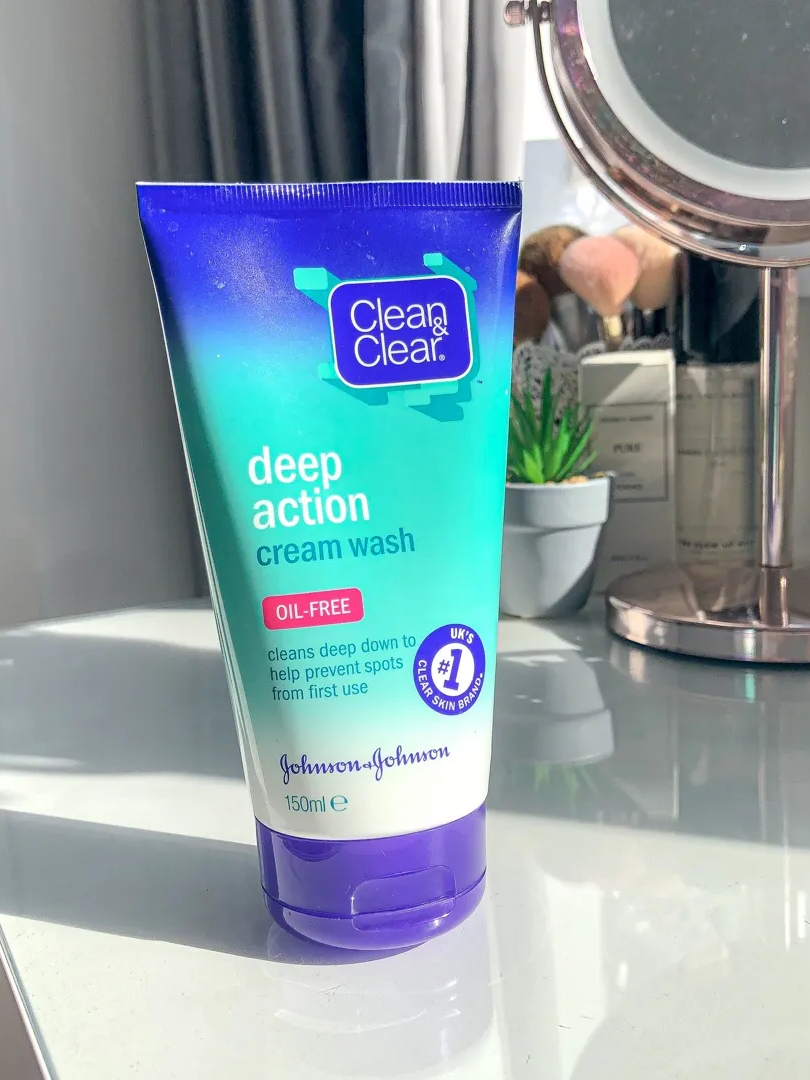
best Scrubs for Acne-Prone Skin:
So, there’s this whole thing about scrubs, right? You’ve got these ones that act like they’re doing you a favor, but really, they’re just fueling those obsessive tendencies. Skip the physical scrubs with their beads – trust me, you don’t need that hassle.
Instead, consider an enzymatic scrub. I’ve got to give props to Huda Beauty for their Yo Glow AHA & BHA Facial Enzyme Scrub – it’s a winner. Smells amazing, and the texture? Super fine. It gently buffs away all that surface gunk without any roughness. Perfect for those of us with a bit of OCD, who just need that satisfying buff. Personally, it even helps me with those moments when I feel like picking at my skin – it’s like a double win. So, if you’re a scrub enthusiast, this one’s for you, but let’s be real, you probably shouldn’t be so obsessed with scrubs anyway.

best Acids for Acne-Prone Skin:
So, let’s dive into acids real quick. We’ve been chatting about salicylic acid, which falls under the beta hydroxy acid category. Now, there’s also alpha hydroxy acids like glycolic acid or lactic acid, but salicylic acid, being the beta one, works wonders for oily skin. Oily skin tends to be more prone to acne because it’s oil-friendly, allowing salicylic acid to penetrate deeper into your pores, breaking up that buildup and clearing your skin from within. I mean, not exactly reaching for the stars, but it goes deep down, you know? That’s why I favor salicylic acid. But remember, more isn’t always better.
Now, everyone’s been raving about The Ordinary’s 2% BHA, which is great, but pairing it with 30% AHA can literally burn your face off. Overdoing it can strip your skin of its natural oils, leading to an inflamed barrier, exacerbating inflammation, and causing your skin to overproduce oils to compensate. So, moderation is key here; you don’t want to go overboard. I get it, some people love extremes, but this isn’t one I’d recommend often. It’s more for those occasional pimple moments or for a chemical peel every few weeks, but definitely not for daily use. 30% is quite potent, and I wouldn’t advise regular application.
if your skin leans more towards the dry side and salicylic acid isn’t your best friend, glycolic acid might be the one for you. I’m a big fan of glycolic acid because it not only exfoliates but also has anti-aging properties. It works wonders in boosting collagen production and gradually evening out your skin tone. Take, for instance, the Glycolic B5 serum by La Roche-Posay, the one that has a distinct smell. There’s also L’Oreal’s Pure Glycolic .

(The reason I don’t tend to recommend a crazy variety of products all the time is because I really need to use products and see them and make sure that they’re tried and true, and then I firmly believe in what they are and stand by them before I recommend them, just in case you guys were wondering.)
best Moisturizers & Sunscreen for Acne-Prone Skin:
Don’t to overlook your moisturizer, especially if you’re in a dry climate. In places like India or Indonesia, where the air is humid, individuals dealing with acne might not feel the need to moisturize. However, in extremely dry climates, moisturizing is crucial even if you have acne. It prevents your skin from sensing dryness and subsequently producing excess oils, similar to how overcleansing can strip your skin of its natural oils.
So moisturizer is non-negotiable, especially for those dealing with active acne. My suggestion? Opt for a gel moisturizer over a heavy cream-based one. Aim for something with a gel-like consistency to avoid exacerbating inflammation. Steer clear of those containing hyaluronic acid, as it could potentially trigger more irritation. My goal is to keep things as calm and soothing as possible for your skin.
So start with a gel-based moisturizer like the one by Aveeno, the one I always talk about,because it’s glycerin-based, it’s not going to be inflammatory, and it’s probably going to be better suited for your skin. Another option worth considering is Embryolisse, a beloved French brand that I personally adore. During the hotter months, I find it works great as a primer, especially in humid conditions. These two options are lightweight and worth giving a shot. If you still feel like your skin needs a little extra TLC, then you can explore thicker moisturizers to find what works best for you
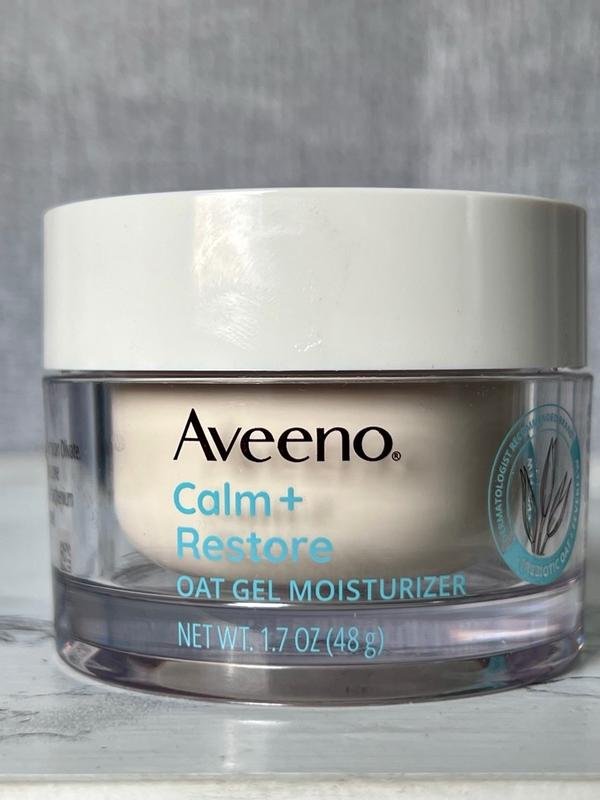

Now let’s talk about the mandatory step three of every skincare routine, or what I like to call “two and a half,” which is sunscreen. It’s not really an option; it’s a necessity. Sunscreen should be part of your daily routine, no exceptions. This is especially crucial if you’re dealing with inflammatory acne because those pimples can get even worse when exposed to sunlight, leaving behind marks that take forever to fade. So, bottom line: slather on that sunscreen every single day.
Now, I get it. Layering moisturizer and sunscreen can feel like too much, especially if you’re constantly on the go. That’s where the Toleriane Double Repair Moisturizer by La Roche-Posay comes in. It’s a game-changer. This isn’t just your average moisturizer; it’s also a sunscreen with SPF 30 and niacinamide for added benefits. Plus, it’s super lightweight and doesn’t leave any greasy residue or weird white cast on your face. Honestly, when I use this, I often skip the moisturizer altogether. Just a heads up though, if you have sensitive eyes like me, it might cause a bit of irritation, so definitely patch test it first.
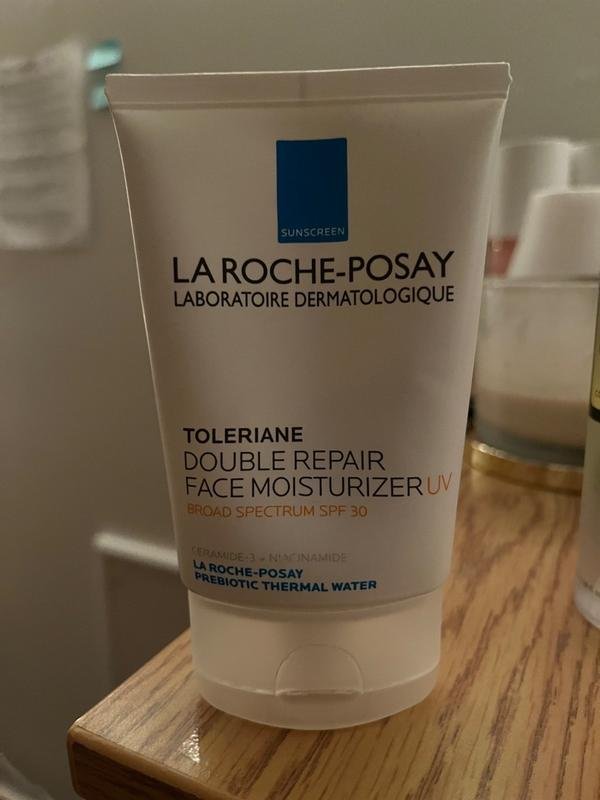
So always spot test any new addition to your skincare routine. If you’re tempted by a new product, resist the urge to go all in immediately. Instead, try a small patch test first, perhaps on the area in front of your ear, to ensure your skin doesn’t react negatively. Give it a few days, or even up to a week, before committing your entire face to it. Think of it as dating before marriage—would you tie the knot without even a single date? I certainly hope not. So, let’s ensure we court our skincare with a spot test before taking the plunge, shall we?
best patch for Acne-Prone Skin:
Let’s discuss Patch pimple patches—also known as acne pimple patches or hydrocolloid patches.I love them because when you have a juicy pimple coming to a head and you just want to pop it, do not pop it.
I remember last year when my mom had to deal with an emergency situation. Maybe one day I’ll share her pictures, if she’s okay with it. She was really worried about this huge pimple on her forehead that she just couldn’t resist picking at. It got so bad, it turned into a massive bump, oozing pus. Luckily, my fiancé was able to help her out, removing the buildup and leaving a small hole in her forehead, which has since healed nicely.Moral of the story: don’t pick at your pimples!
Try using the COSRX Acne Pimple Master Patch instead. These patches are gentle and suck out all the gross stuff from your pimple without hurting your skin more. Here’s a tip: take a hot shower, let your pimple get really ready to pop, then put on the patch overnight. It’ll help get rid of it without causing more damage.

best pimple paste for Acne-Prone Skin:
If you don’t want to use a patch but you just want to dry out a pimple, I recommend a product called Pimple Paste from InBeauty Project. It looks like toothpaste but it’s not. It’s made with sulfur, which is good for oily, inflamed acne because it absorbs excess oil and clears away dead skin cells that clog pores and cause blackheads and whiteheads. This sulfur paste doesn’t smell bad, but it does contain oregano, thyme, and willow bark, so if you have sensitive skin, be cautious. Always do a spot test on a small pimple before using it everywhere. It’s made for treating small pimples specifically, so it’s my next tip for spot treatments.

best retinoids for Acne-Prone Skin:
So, let’s talk about retinoids. They’re super helpful for clearing out your pores. At the drugstore, you can find one called differen adapalene. It’s strong and works well, but don’t use it if you’re pregnant. Be careful because it can make your skin really sensitive, especially around your mouth. There are stronger ones you can get with a prescription, and then there are milder ones you can buy without a prescription, called retinols.

Watch out for retinols because there’s a lot of tricky advertising out there. Take Glossier’s product, for example. They call it a Universal Pro-Retinol, making you think it’s a proper retinol. But actually, it’s a precursor to retinols called retinol sunflowerate. It’s not as strong as it sounds because it’s a blend of different things, not just retinol palmitate, at varying percentages.
So, it’s not all 0.5 percent retinol. It’s pretty mild. If you’re new to using retinol, this might be a good starting point. But remember, a pro-retinol isn’t as potent as a regular retinol. If you’re hesitant about using retinol, start with this one. Later, you can try stronger options like L’Oreal’s pure retinol. You don’t need a doctor’s prescription for these.


And finally, I really like hypochlorous acid. Tower 28 makes a really good one. Their bottle is nice, and it feels like something to aim for. I use it during the day to help reduce any redness I might have and to keep my acne under control. Seriously, just spritz it on and forget about it while you go about your day. It helps keep bacteria away. I’m a big fan of this product.
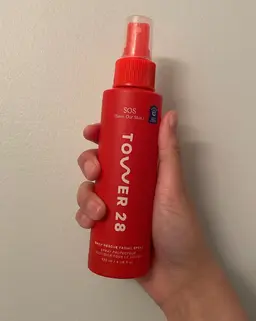
The bottom line
So, those are all my tips for dealing with acne. I’ve shared a lot of info here, enough for maybe 20 articles! I might dive deeper into each section later on. Hope you found this article helpful!
My readers’ feedback matters to me. If you have any questions or thoughts, please leave a comment below.
